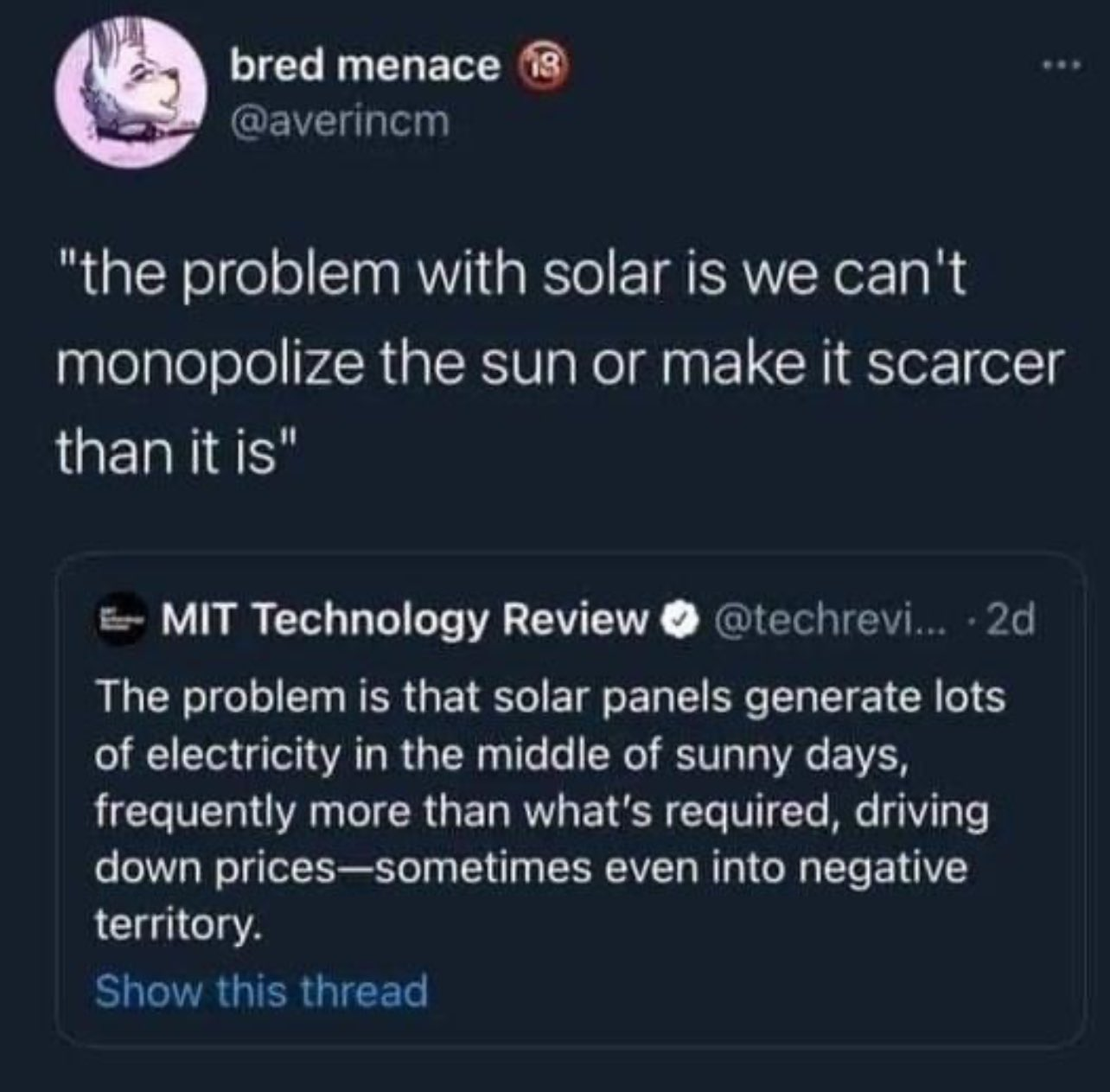this post was submitted on 02 Oct 2024
1690 points (95.6% liked)
Microblog Memes
5872 readers
5148 users here now
A place to share screenshots of Microblog posts, whether from Mastodon, tumblr, ~~Twitter~~ X, KBin, Threads or elsewhere.
Created as an evolution of White People Twitter and other tweet-capture subreddits.
Rules:
- Please put at least one word relevant to the post in the post title.
- Be nice.
- No advertising, brand promotion or guerilla marketing.
- Posters are encouraged to link to the toot or tweet etc in the description of posts.
Related communities:
founded 1 year ago
MODERATORS
you are viewing a single comment's thread
view the rest of the comments
view the rest of the comments

Before commenting, you should know there are 2 types of solar panels:
The article is probably about the 2nd kind (if you can only sell energy when there is a surplus, your company will fail), while the twitter user makes it seem like the 1st kind was meant. We probably need to built more of both types. Identify what type the other commenters are talking about before getting in any arguments here.
You have also made a good argument for socialized energy production. Any time you run into these situations where the optimal solution for a good society requires and is anti-profit, that's a good place for socialized ownership.
It would be nice if anyone linked the actual article instead of just guessing based off of a screenshot.
Edit: This is the actual Twitter thread... and this is the article referenced. They're saying that since solar plants all generally generate electricity at the same time, high enough solar adoption would mean prices would been driven down during those hours, which lowers the appeal of creating new solar panels over time. Which has implications for clean energy goals.